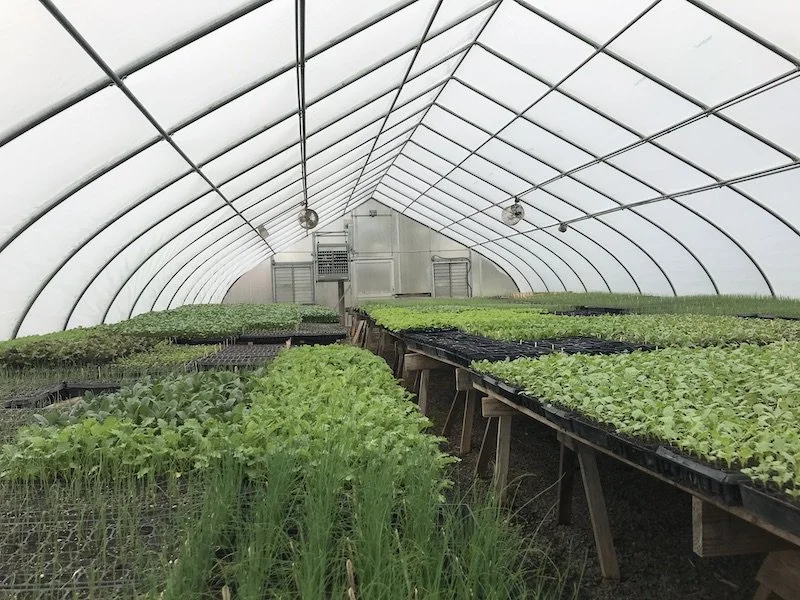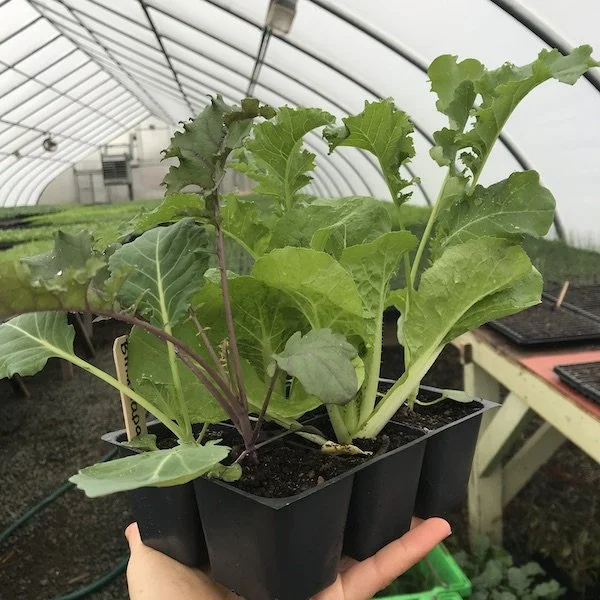April Garden Guide
April is the start of the big planting season on the farm. We're planting all kinds of things that can take a brief light frost and survive. Check our our blog on de-mystifying planting dates for more information on when and how we plan our plantings.
One of our “six-pack mixers.” This one contains a mix of brassicas (kale, cabbage, collards). These are great Spring Garden starters! We also have Broccoli, Kale, & Cabbage mixers for sale.
Here's what to plant in April:
Alliums: onions sets or transplants, leeks, and scallion transplants
Brassicas of all types: greens, radishes, turnips, bok choy, kale, broccoli, regular cabbage, napa cabbage, kohlrabi -- these can be transplanted or direct seeded
Potaotes! Usually we plant in March, but ours arrived late in 2022, and April is also a fine time to plant.
Beets, Spinach, and Carrots: we usually direct seed these in March, but April works too!
Fennel and lettuce transplants later in the month after long range forecast shows no frost
Cilantro, Dill - direct seed is best! Perennial herbs of all types!
Here's what to wait a little longer for:
Basil, summer squash, tomatoes, peppers, eggplant, most flowers
Conservation Garden Tips:
We’re all trying to grow in a way that is harmonious with the ecology around us. Here are some of the easiest ways you can change up your garden habits to benefit the living systems in your garden.
1) Delay garden “clean up” as late as you can. Did you know butterfly, praying mantis, and other beneficial bugs overwinter in the dead plant material in your garden? If you clear those things away now, they won’t be there when your plants need them! Clear just the area you’ll be seeding early and leave the rest until soil temps are consistently above 50 degrees (usually by mid-April).
2) Control a large patch of grass? Consider reducing or eliminating your mowing chores. Why mow every week if you can mow once per year? Ask yourself: why am I mowing? For city yards, lawns make sense. For large country plots, you’re just wasting time and diesel. If you mow once a year, the ideal time is any time now thru mid-April. Avoid mowing in the months of May, June, and July, as those are the most common nesting season for grassland birds.
3) Keep that soil covered! Till only just ahead of planting and minimize the time bare soil is left uncovered. You can use cover crops, mulch, or veggie crops as your cover of choice.


